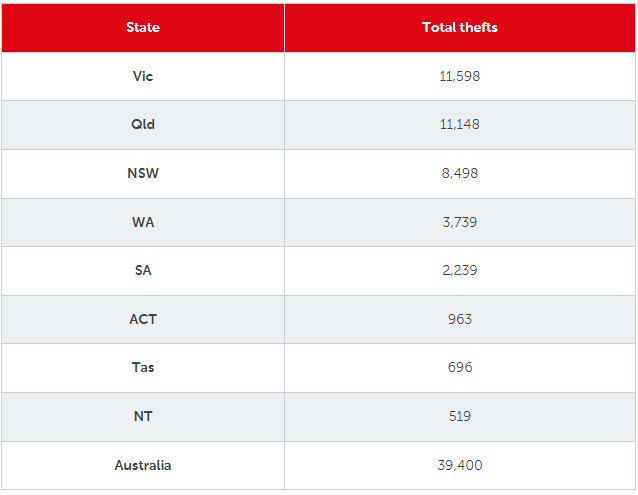
How much is too much for you? The GT 63 S has always had a knack for provoking this question. When Mercedes-AMG launched it a few years ago, some people – seasoned observers, even – were inclined to press palm to forehead and seriously consider what it all meant. Did we really, honestly need a 639hp, two-tonne, 4Matic-equipped, four-wheel steer, four-door coupe with a six-figure asking price? After all, we already had the closely-related Mercedes-AMG E63, itself vastly overqualified at the business of transporting you and your meagre belongings anywhere at great speed and in great comfort. Was there genuinely a customer-based requirement for something very much like the E-class, but with the AMG-meter cranked all the way up to 11?
As is so often the case with these things, the short answer from a distance was ‘no’. But the longer answer, usually tendered in its presence, was ‘well, maybe’. Partly that’s because, in the flesh, the GT 63 radiates roughly the sort of physical vibe you’d expect from a ballroom full of bare-chested yakuza. Pictures don’t seem to do it justice, and it’s vanishingly rare to actually see one, so you must trust us when we say that no other car currently on sale conveys malevolence quite so successfully. Or gleefully. It’s the sort of car that might’ve convinced Luke Skywalker that, a few bad eggs aside, the dark side really had something going for it.
And if you were inclined to think that, you were probably okay with the fact that Mercedes-AMG had apparently gone someway to making the car drive how it looked. Where the E63 can play the friendly giant as well as any upmarket family car, the GT 63 S barrels from place to place like an irritable Decepticon, just dying for you to transform into a road warrior worthy of its output and otherworldly limit. As you might expect, this did not always make it the most restful or refined or easygoing companion – and its sheer size never stops being a factor – but if you found the right road and tuned into its knowing, ‘gone rogue’ wavelength, the car was more compelling than it perhaps had any right to be.


But assuredly if it was not too much, it was plenty enough. No one who drove it, even those who especially liked the whole international arms dealer image, thought it was lacking something in the performance stakes. Nevertheless, the E Performance variant, Mercedes-AMG’s first production hybrid, had a sense of inevitability about it. Clearly, the firm decided a bold statement was required as it penetrated the petrol-electric era, and what could be more brazen – more emphatically AMG – than a GT 63 with 843hp and ‘up to’ 1,084lb ft of torque?
Even without getting too bogged down in the latter figure (the manufacturer gets a little bit hazy about when precisely, and for how long, this amount of twist is available) the E-Performance easily ranks as one of the most powerful cars ever made, courtesy of the rear-mounted 204hp e-motor now assisting the 4.0-litre twin-turbocharged V8 via an ‘Electric Drive Unit’. Also comprising the 6.1kWh battery and a two-speed transmission, the EDU sits atop the back axle like a giant limpet, and while it is unequivocally a marvel of modern engineering, the battery alone adds 89kg to the scales. All told, with a svelte 75kg driver aboard, the flagship model weighs in at 2,380kg – considerably more than the conventional version.
Predictably, in a straight line, this seems about as burdensome to the new powertrain as an additional molecule is to an ICBM. Ours was not a long or particularly appropriate go (a salt flat would be a better backdrop), but it was sufficient to know that, in the most obvious way, the E Performance lives up to its billing. Probably it is necessary in this day and age to temper our descriptions of raw speed because the benchmark itself is in perpetual motion, but suffice it to say that even with precious little room to explore its full potential, the car seems eminently worthy of its claimed 2.9-seconds-to-62mph time.


The electric motor’s part in all this plays out as you might expect. It would be preposterous to suggest that there is a prolonged wait for 664lb ft of torque to materialise in the non-hybridised GT 63 S, yet it is into this infinitesimal lull in the action that Mercedes-AMG has inevitably inserted the E Performance’s main party trick. Any previous reticence in throttle response is now a distant memory: the latest model spirits itself away from a standing start with the sort of instantaneous, here-we-go scurry that distinguishes virtually every car furnished with even a modestly powerful electric motor.
Of course, unlike a similarly powerful all-electric rival, this surge does not continue unabated in the usual one-note fashion; it is a baton to be sleekly passed on to the ever-present V8, which is more than happy to perpetuate the scalded-cat theme for as long as there is road ahead to accommodate it. The result could hardly be called organic – or even instinctively likeable – but the old and new world order are homogenised well enough, and the result is undeniable: Mercedes-AMG’s insistence that ‘E Performance’ means just that rings true. This is a hugely fast petrol car made to go faster still.
To some extent, the firm is following in the wake of others. After all, for several years now Porsche has given the E-Hybrid version of the Panamera top billing, and in Turbo S format, it too merges a turbocharged 4.0-litre V8 with a prominent electric motor, albeit with 143 fewer horses (not to mention quite a lot less peak torque) to shift its similarly super-sized kerbweight. But the electrified Panamera also furnishes its owner with 30-odd miles of zero-emission functionality as an upside to the dynamic inconvenience of its 17.9kWh battery; Mercedes-AMG’s unwavering focus on performance has resulted in just 8 miles of silent running thanks to the GT 63 S’s much more svelte packaging of fewer cells. Additionally, it claims a combined average of 35.8mpg to the Panamera’s 97.4mpg.


Quite what the pecking order looks like in terms of handling will have to wait for another day: our time with the newcomer was far too short to provide a definitive or even very helpful answer. Certainly, the GT 63 S seems quicker and lustier and a good deal more interesting to drive than the somewhat uninspiring Porsche, and it would be a surprise if the generational gap (the Panamera’s tech is half a decade older than its rival) and notable packaging advantages didn’t leave a mark on proceedings. For what it’s worth, power source aside and in the absence of fast corners, the GT 63 S seemed much as it was before: boastfully large and imposing, sometimes twitchy, always rabid, often memorably so.
Whether or not all this satisfies the E Performance’s premium is also, for now, open-ended. The wider running cost benefit does seem somewhat overshadowed by the decision to charge an extra £22,385 for the petrol-electric variant, although, credit where it’s due, it is impressively in keeping with Mercedes-AMG’s take-no-prisoners approach to the GT 63 S in general. Too much for you? Well, so be it – evidently, the internal business case for developing and building an 843hp plug-in hybrid was justified years ago, and its wafer-thin niche probably thought just fat enough to sustain production of what is plainly a brand-affirming flagship. In that respect at least, the car is the latest in a long line of swaggering, output-swollen AMGs. As it was surely intended.
Specification | 2023 Mercedes-AMG GT 63 S E Performance
Engine: 3,982cc, V8, turbocharged
Transmission: nine-speed DCT, four-wheel drive
Power (hp): 843 (639 @ 5,500-6,500rpm)
Torque (lb ft): 1,084 (664 @ 2,500-4,500rpm)
0-62mph: 2.9 seconds
Top speed: 196mph
Weight: 2,380kg
MPG: 35.8 (WLTP)
CO2: 180g/km (WLTP)
Price: from £178,800
#MercedesAMG #Performance #Review













